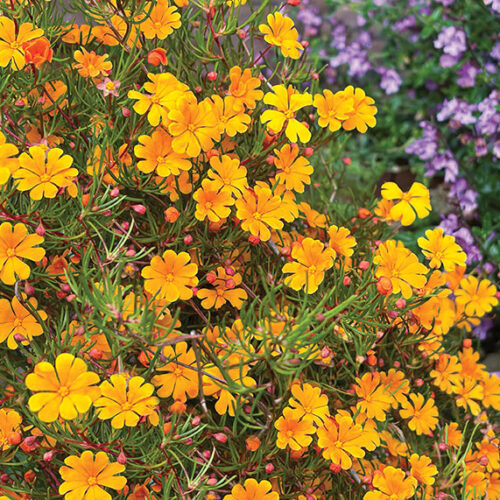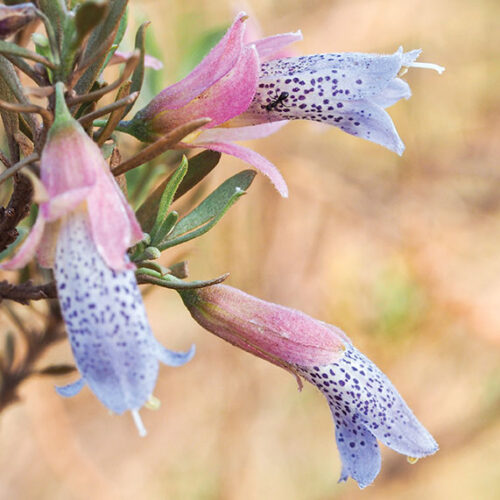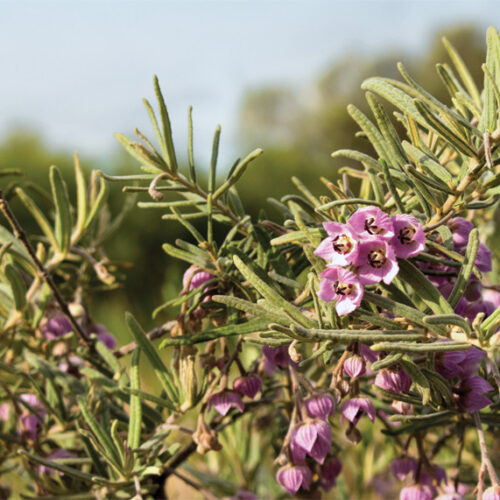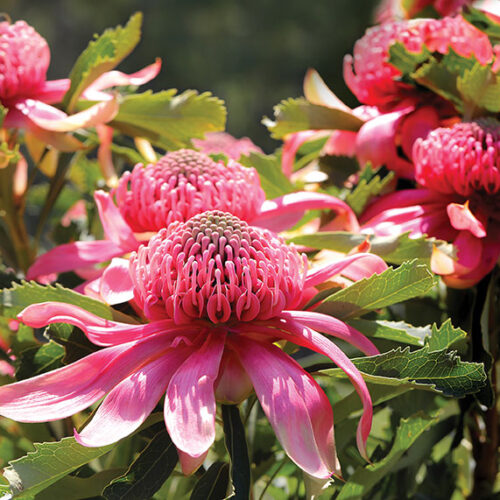Native grasses for your garden
2023-09-20T16:47:48+10:00
There are practical as well as aesthetic reasons to grow beautiful native grasses. Here are a few top native grass varieties.
Australian native grasses have adapted to our climate and impoverished soils, and are low to no maintenance. They provide incredible habitat options for wildlife, many of which have evolved together. Up to a quarter of butterfly species use grasses as host plants for their larvae, so grasses are a really easy way to encourage more flying colour in your garden. A plethora of other insects also feed on, or take refuge in, native grasses. And guess who feeds on insects? Birds, lizards and frogs!
Tussock-forming grasses provide safety for small critters, and you can create the perfect habitat for them by placing rocks, hollow logs or even small branches near the grasses, along with a shallow birdbath.
Mass planting soft grasses is a great way to create a large, low-maintenance area. It also looks sensational, especially when interspersed with pockets of colour from gaura, tulips or native daisies.
The fibrous root systems of grasses help to prevent erosion on slopes. Many species also thrive in those too-boggy, too-dry or too-shady spots where other plants sulk.
Native grass varieties
Besides the common forms, there are many cultivars, with something for every spot. Here are some to get you started.
Pennisetum alopecuroides ‘Nafray’
Yes, the gently swaying, fine green foliage is attractive, but it’s the soft, mauve flower plumes in summer and autumn that get your heart racing! Often confused with the invasive African Pennisetum setaceum, this native has low seed viability, and usually won’t become weedy, but seed sometimes germinates in warm, wet winters. If you’re concerned, remove spent flower heads. Use this grass as an informal, low hedge, or mass plant on a slope for erosion control. It suits sandy to clay soils. Trim annually to one-third its size in late autumn to winter.
- Grows 60cm high, 60cm wide
- Full sun or semi shade position
- Drought, frost tolerant and humidity tolerant
- Suitable for tropical, subtropical, arid, warm temperate and cold temperate climates
Kangaroo grass (Themeda triandra)
If you love butterflies and have room for only one grass in your garden, plant this beauty. Native to every Australian state and territory, kangaroo grass is a host plant for at least 13 species of butterflies. Individual plants can look a bit scrappy, so mass planting is definitely the way to go. Interspersed with a groundcover such as Grevillea ‘Bronze Rambler’, curved rows of kangaroo grass can really bring that wow factor to the garden, along with being low maintenance. Summer is when you really appreciate the texture and colour of the long leaves of this grass, which change from green to grey to orange-brown as the season progresses. The ornamental nature of kangaroo grass is further highlighted when the distinctive spiky flowers and seed heads appear in summer. Give the plants a hard cut-back in early spring to induce new, green growth.
- Grows 80cm–1.5m high, 50cm wide
- Full sun or semi-shade position
- Coastal, drought and frost tolerant
- Suitable for tropical, subtropical, arid, warm temperate and cold temperate climates
Knobby club-rush (Ficinia nodosa)
As a sedge, this plant comes into its own when planted in and around water features, and it’s certainly a frog-friendly species. Conversely, it is not opposed to drying out, and may be the perfect choice for rain gardens or that tricky spot where nothing else survives. The plant’s upright form and gently arching cylindrical stems juxtapose well against larger-leafed plants, such as bird of paradise, and its attractive near-spherical seed heads add quirky interest.
- Grows 50cm–1m tall, 80cm wide
- Full sun or semi-shade position
- Coastal, drought and bog tolerant
- Suitable for tropical, subtropical, arid, warm temperate and cold temperate climates
Lomandra longifolia ‘Tanika’
‘Tanika’ is one of those set-and-forget plants, which is why it’s so popular with gardeners, landscapers and councils around the country. It’s a much-improved, compact, fine-leafed form of the rather ungainly Lomandra longifolia. Although ‘Tanika’ suits most soils, unlike its parent it prefers to keep its feet dry. Without any input from you once it’s established, it will eventually grow into perfectly symmetrical mounds not dissimilar in shape to shaggy dog Dougal of The Magic Roundabout fame. ‘Tanika’ is a wonderful bright green, and has long spikes of small mustard-yellow flowers from April to October. Throw any landscaping challenge at this grass and it will delight you! Cut it back to 15cm above ground level every three years.
- Grows 50–60cm high, 65cm wide
- Full sun or semi-shade position
- Drought and frost tolerant
- Suitable for subtropical, arid, warm temperate and cold temperate climates
Photo by Ozbreed





